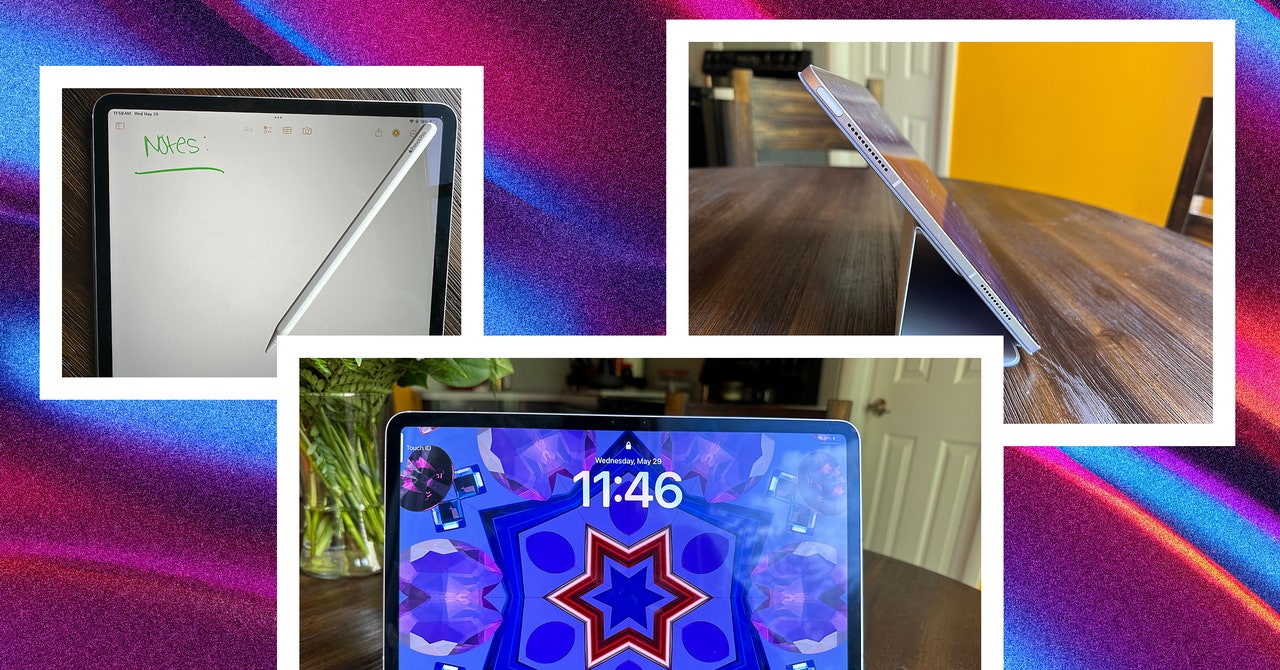
The major upgrade with this tablet is the bigger display. The 13-inch LCD screen is slightly brighter than its predecessor and 11-inch counterpart, with a 2,732 x 2,048-pixel resolution and the ability to hit 600 nits of peak brightness in Standard Dynamic Range (which is the same amount as the previous iPad Pro with M2).
This display does get bright for the most part. When I wasn’t working, I usually kept the brightness at about 20 to 30 percent—especially while watching TV before going to sleep. Since my desk is near the edge of a window, I usually keep it at 50 percent or slightly above that on sunnier days. But it struggles under direct sunlight. I realized this on a recent trip to Seattle. I was sitting on my bed in my hotel room catching up on an episode of Vanderpump Rules and, as the light was shining fully through the window, I had to crank the brightness up to see the content comfortably.
Photograph: Brenda Stolyar
In these moments, I wish Apple would’ve swapped the Liquid Retina panel for a mini-LED panel from the previous iPad Pro generation. The backlighting technology would allow for a brighter screen. And, when coupled with the deeper, and crisper tones, it’d make for a far better viewing experience overall. I’d like to remind you that this is a $800 tablet with an LCD screen and 60-Hz refresh rate—most other high-end tablets feature OLED with 120-Hz screens. An upgraded screen technology would help justify the extra $200 on the 13-inch iPad Air over the smaller size.
Regardless, it’s still far more enjoyable to use than the 10.9-inch screen I relied on every day. The 13-inch size is more convenient as a secondary display alongside my MacBook. Between browser windows, tabs, and apps, I didn’t feel like I was cramming stuff onto the screen. The same applies to entertainment—if I’m bingeing a show, I carry the iPad all over the house to keep watching. I never got tired of staring at this screen.
Reliable and Versatile
Powering the iPad Air is the M2 chip (the same silicon featured in the MacBook Air from 2022), which packs an 8-core GPU and a 10-core GPU. It’s two years old, but Apple claims the chip is nearly 50 percent faster than the M1 and three times faster than the iPad Air with the A12 Bionic chip. Apple also doubled the base storage option from 64 gigabytes to 128 gigabytes.
Coming from the M1 iPad Air, I didn’t notice much of a difference in performance. If you’re coming from an older A-series chip, it’ll likely be easier to pick up on. Regardless, the M2 felt quick and smooth. On a typical workday, I’d have about 10 to 15 tabs open across several windows (on both Chrome and Safari), not to mention additional apps like Gmail, iMessage, Slack, Telegram, YouTube, and Zoom running simultaneously. The iPad Air never once felt sluggish.
Discover more from reviewer4you.com
Subscribe to get the latest posts to your email.





